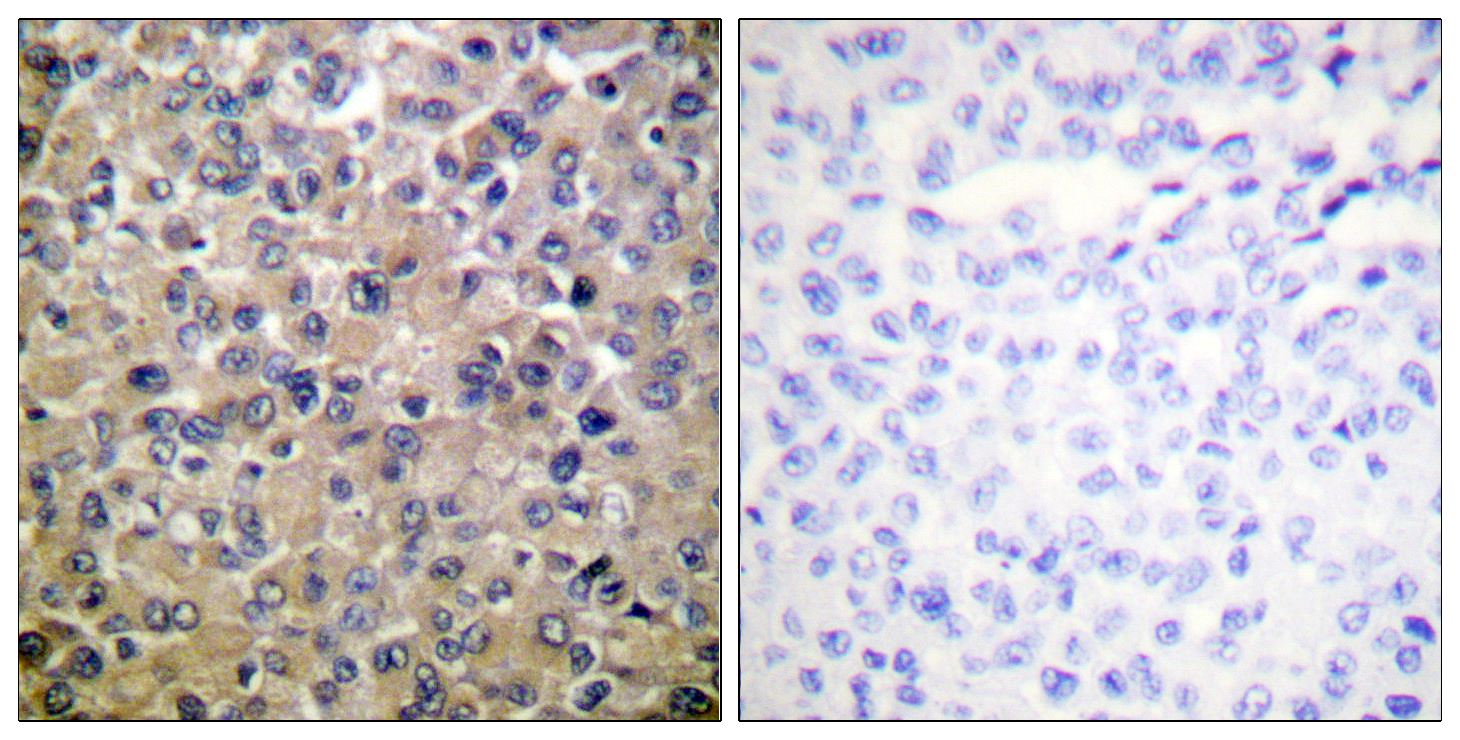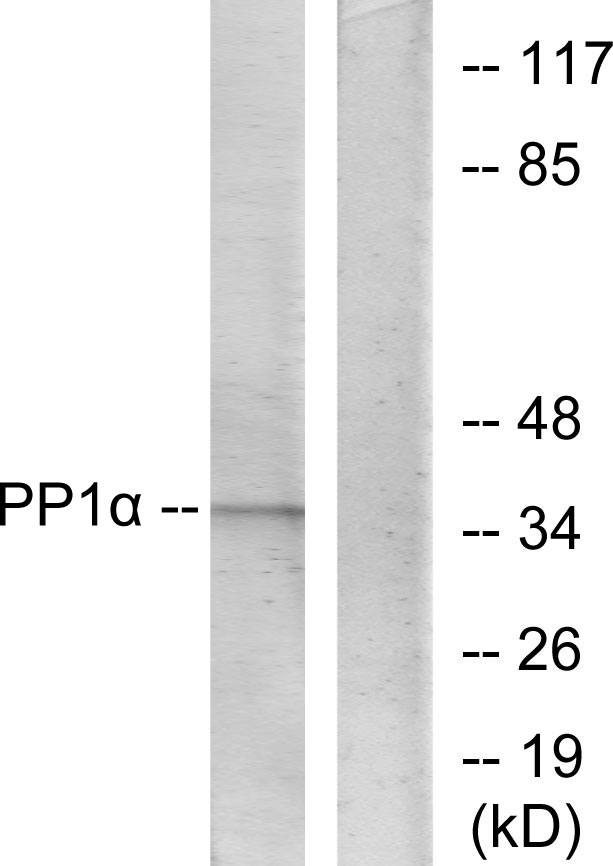产品名称
PP1α Rabbit Polyclonal Antibody
别名
PPP1CA; PPP1A; Serine/threonine-protein phosphatase PP1-alpha catalytic subunit; PP-1A
蛋白名称
Serine/threonine-protein phosphatase PP1-alpha catalytic subunit
存储缓冲液
Liquid in PBS containing 50% glycerol, 0.5% BSA and 0.02% New type preservative N.
Human Gene Link
http://www.ncbi.nlm.nih.gov/sites/entrez?db=gene&term=5499
Human Swissprot No.
P62136
Human Swissprot Link
http://www.uniprot.org/uniprotkb/P62136/entry
Mouse Gene Link
http://www.ncbi.nlm.nih.gov/sites/entrez?db=gene&term=19045
Mouse Swissprot No.
P62137
Mouse Swissprot Link
http://www.uniprot.org/uniprot/P62137
Rat Gene Link
http://www.ncbi.nlm.nih.gov/sites/entrez?db=gene&term=24668
Rat Swissprot Link
http://www.uniprot.org/uniprot/P62138
免疫原
The antiserum was produced against synthesized peptide derived from human PP1-alpha. AA range:281-330
特异性
PP1α Polyclonal Antibody detects endogenous levels of PP1α protein.
稀释度
WB 1:500 - 1:2000. IHC 1:100 - 1:300. ELISA: 1:5000.. IF 1:50-200
宿主
Polyclonal, Rabbit,IgG
背景介绍
The protein encoded by this gene is one of the three catalytic subunits of protein phosphatase 1 (PP1). PP1 is a serine/threonine specific protein phosphatase known to be involved in the regulation of a variety of cellular processes, such as cell division, glycogen metabolism, muscle contractility, protein synthesis, and HIV-1 viral transcription. Increased PP1 activity has been observed in the end stage of heart failure. Studies in both human and mice suggest that PP1 is an important regulator of cardiac function. Mouse studies also suggest that PP1 functions as a suppressor of learning and memory. Three alternatively spliced transcript variants encoding different isoforms have been found for this gene. [provided by RefSeq, Jul 2008],
组织表达
Colon carcinoma,Liver,Lung,Muscle,Pancreas,Placenta,Platele
细胞定位
Cytoplasm . Nucleus . Nucleus, nucleoplasm . Nucleus, nucleolus . Primarily nuclear and largely excluded from the nucleolus. Highly mobile in cells and can be relocalized through interaction with targeting subunits. NOM1 plays a role in targeting this protein to the nucleolus. In the presence of PPP1R8 relocalizes from the nucleus to nuclear speckles. Shuttles toward the cytosol during infection with VEEV (PubMed:29769351). .
信号通路
Oocyte meiosis;Vascular smooth muscle contraction;Focal adhesion;Long-term potentiation;Regulates Actin and Cytoskeleton;Insulin_Receptor;
功能
catalytic activity:A phosphoprotein + H(2)O = a protein + phosphate.,caution:The sequence shown here is derived from an Ensembl automatic analysis pipeline and should be considered as preliminary data.,cofactor:Binds 1 iron ion per subunit.,cofactor:Binds 1 manganese ion per subunit.,enzyme regulation:The phosphatase activity of the PPP1R15A-PP1 complex toward EIF2S1 is specifically inhibited by Salubrinal, a drug that protects cells from endoplasmic reticulum stress.,function:Protein phosphatase 1 (PP1) is essential for cell division, and participates in the regulation of glycogen metabolism, muscle contractility and protein synthesis. Involved in regulation of ionic conductances and long-term synaptic plasticity. May play an important role in dephosphorylating substrates such as the postsynaptic density-associated Ca(2+)/calmodulin dependent protein kinase II.,online information:The things we forget -Issue 32 of March 2003,similarity:Belongs to the PPP phosphatase family.,similarity:Belongs to the PPP phosphatase family. PP-1 subfamily.,subunit:PP1 comprises a catalytic subunit, PPP1CA, PPP1CB or PPP1CC, which is folded into its native form by inhibitor 2 and glycogen synthetase kinase 3, and then complexed to one or several targeting or regulatory subunits. PPP1R12A, PPP1R12B and PPP1R12C mediate binding to myosin. PPP1R3A, PPP1R3B, PPP1R3C and PPP1R3D mediate binding to glycogen. Interacts with PPP1R9A and PPP1R9B. Part of a complex containing PPP1R15B, PP1 and NCK1/2 (By similarity). Interacts with PPP1R7. PPP1R15A and PPP1R15B mediate binding to EIF2S1. Interacts with HHV-1 ICP34.5.,
纯化
The antibody was affinity-purified from rabbit antiserum by affinity-chromatography using epitope-specific immunogen.


